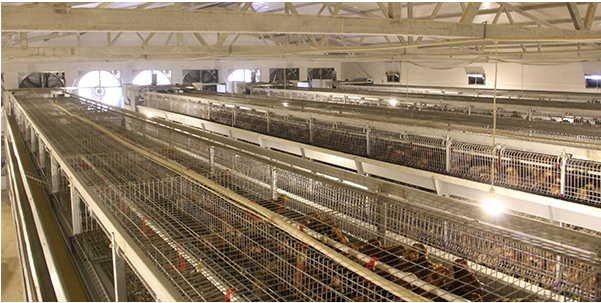Some precautions for moisture-proof and light-filling of chicken coops in summer
- font size
- Be the first to comment!
The temperature in summer is relatively high. It is not good for laying hens raised in poultry breeding equipment. The high temperature of the chicken house will cause the chickens to reduce their feed intake. Farmers must do a good job in cooling down, but also to prevent the chicken coop from becoming damp.
First of all, when building the chicken coop, choose a place with high terrain. Avoid getting wet due to rain. Temperature and humidity are relatively high in spring and summer. In these two seasons, attention should be paid to strengthening the ventilation of the chicken house. Note that the temperature of the chicken house in the insulated chicken cage should not be lower than 15°C. Under the premise of moderate heat preservation, ventilation should be strengthened. Avoid the accumulation of more moisture in the chicken coop.

We also need to know in the process of using chicken cage to raise chickens. Although the stocking density is high, it must meet the requirements. Don't increase the density blindly, but maintain a proper stocking density. If the density is too large, it will cause crowding of the chickens, which is not conducive to moisture prevention. Also pay attention to prevent the leakage of drinking utensils.
Generally, the time that farmers choose to supplement the light for the laying hens starts from the 19th week of the laying hens. When starting to set the light time, it should be increased slowly from short to long, and it is appropriate to increase it by half an hour a week. Farmers should note that when the light increases to 16 hours a day, they should maintain a stable light. Then the daily light cannot be long and short. The best way is to add light once a day in the morning and evening.


